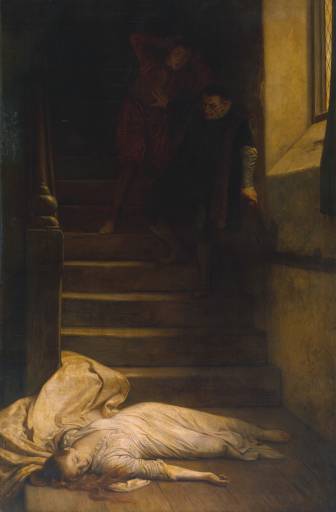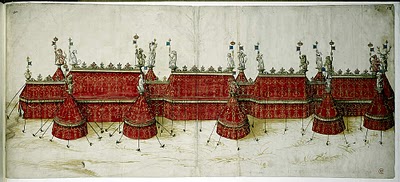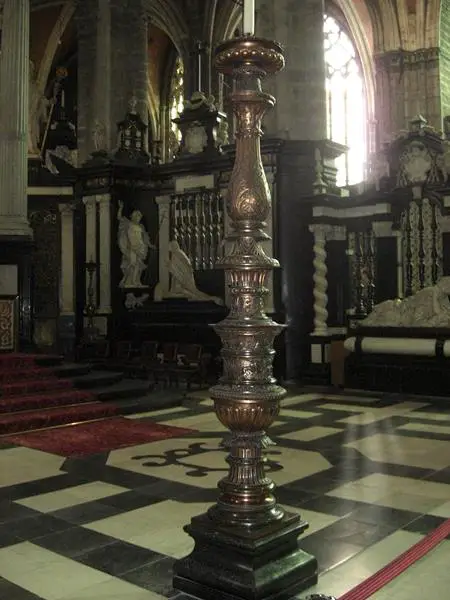
Robert Dudley by Nicholas Hilliard
Both Amy and Dudley were a few days short of their 18th birthdays when they got married, and the marriage was a love-match, or a "carnal marriage" as William Cecil described it, rather than an arranged union. The couple were sweethearts and very much in love, but it was not to be a happy marriage and events conspired against them.
Just three years after their wedding, Dudley was imprisoned in the Tower of London for his involvement in the brief reign of Lady Jane Grey, the wife of his brother Guildford. Amy was allowed to visit him, but he was imprisoned until October 1554, and when he was released, the couple had nothing to live on and had to depend on handouts from their families. The couple were again parted when Dudley went to fight for King Philip II of Spain, Mary I's husband, in 1557 at the Battle of St Quentin in France, but there is no evidence at this point that the couple were anything other than happy. In the summer of 1558, they were looking for a home together in Norfolk, although events soon conspired against them again.
In November 1558, Mary I died and Elizabeth I, Dudley’s childhood friend, became Queen of England. Elizabeth soon rewarded Dudley for his friendship and support by making him Master of the Horse. This role required him to be away from Amy at court, and to spend most of his time with the Queen. Just five months later, ambassadors and diplomats were repeating the gossip that the Queen was in love with her favourite, Dudley, and that the couple were planning to marry after Amy's death – Amy had some malady in one of her breasts, probably breast cancer.
Although Amy's health had improved enough for her to visit London in May 1559, she never saw her husband again, and died on Sunday 8th September 1560 at Cumnor Place near Abingdon, her rented accommodation. Her death is rather a mystery. Her body was found at the foot of the stairs when her servants returned from their day out at the Abingdon Fair, and although the coroner ruled that Amy, "being alone in a certain chamber … accidentally fell precipitously down", there were rumours and mutterings that Dudley, and even the queen, had been poisoning Amy and had arranged her death. There is still controversy today over whether it was suicide, murder or an accident.

The Death of Amy Robsart, a Victorian painting by William Frederick Yeames



It’s nice to read about Amy Robsart as something other than a dead body at the foot of a staircase. When historical figures are marginalized to a sound bite, they are denied the basic decency due anyone.
“Curious rooms run along each side in the roof round the quadrangle, called “the barracks,” into which it would be possible to pack away a whole regiment of soldiers. Not far away are “the false floors,” a typical Amy Robsart death-trap! ”
http://www.gutenberg.org/files/13918/13918-h/13918-h.htm
What does this mean, the false floors are a typical Amy Robsert death-trap?
Is the writer inferring that a priest was in the Cumnor Place house and when everybody left, the priest came out of hiding, leaving an uneven floor that tripped Amy Robsart? I can’t find this turn of phrase any place other than the book for which I’ve given the link. ?????
What priest and why a priest? The men that Dudley had on his payroll were not priests, they were his retainers and capable of murder if he ordered it. However, there is no evidence of murder and it is only in literature he uses one to hang around and do the deed. The cause of death is still uncertain but Dudley complied with an autopsy. The cause could be accidentally falling and hitting her head, death by falling because she was ill or had taken too many strong remedies for pain, suicide, although this may be more easily dismissed because of the way it was viewed at the time, or lastly, the popular theory of murder. The first two are accepted as the more likely causes.
I read someplace long ago that some believed that she might have accidently slipped and fallen down the stairs. Having advanced breast cancer can make bones brittle and it is just as easy to speculate over the centuries that she fell and broke her neck when she fell. Of course others said she was pushed. Good case for CSI.
The Queen was besotted with Dudley and he was ambitious. Although Amy would have died from her possible cancer It May have taken a year or more. The Queen was capricious and who knew how long Dudley would remain her favorite. I think he went for the main chance and had her killed. He provided himself with a good alabi and with the aristocratic sense of entitlement and the power of the Queen who would not abandon him thought he could pull it off. How wrong he was. Elizabeth’s head ruled her heart and he lost all.
Wouldn’t he have known that he’d be prime suspect?
I do find it sad that he and Elizabeth loved each other but couldn’t be together.
I agree with Claire. Also, its *alibi. It was an accident or suicide.
Dudley may have loved Elizabeth; but he was also not completely or inordinately stupid. The death of his wife by any means other than natural causes would ruin any future with the Queen. I vote accident.
Another possibility is that someone else who wanted to cast suspicion on Robert Dudley to ensure he could never marry Elizabeth arranged to have Amy killed. That said, I think it is much more likely that she did it to herself, either accidentally or on purpose. The reports that she was intent on getting all of her servants out of the house that morning point to suicide.
The person who benefited the most from Amy’s death was Elizabeth’s chief minister and adviser, William Cecil. His conversation with de Quadra, the Spanish Ambassador, the day before Amy’s death, is suspicious. Cecil was Robert Dudley’s enemy, and would have done anything in his power to prevent a marriage between Dudley and the Queen, which would have ended his own career.